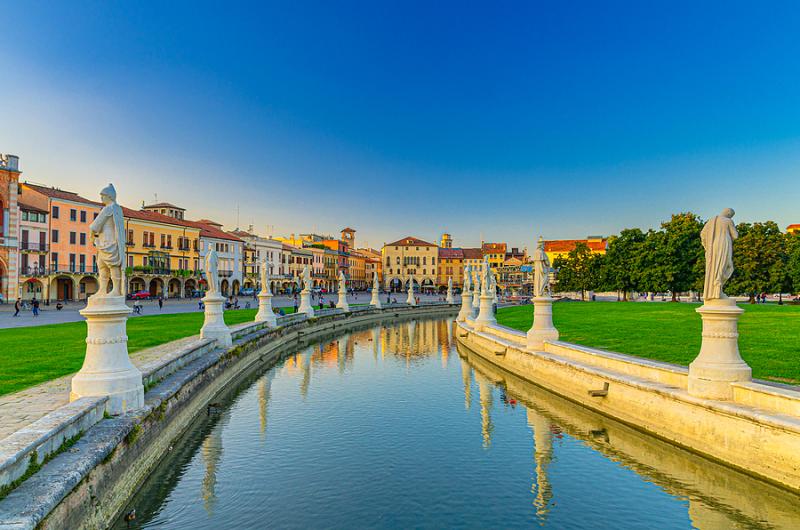To honor the world’s first female graduate, the northern Italian city of Padua plans to install the first statue of a woman among 78 dedicated to notable male figures in its most important square, Prato della Valle.
The woman in question is Elena Lucrezia Cornaro Piscopia, the first woman in the world to get a university doctoral degree. Piscopia graduated from the University of Padua on June 25, 1678, with a degree in Philosophy. Her statue will join the 78 existing statues of historical figures who were either from Padua or had links to it — all of them men — ranging from Savonarola to Galileo, Mantegna, Petrarch, Tasso and Canova.
The city council approved the motion in early February, not before the proposal had caused some controversy, with detractors arguing that a statue of Piscopia in Prato della Valle would be out of context. A statue honoring Piscopia already exists at the University of Padua, located at the Bo Palace.
It has not been decided yet where the statue of Piscopia will be placed in Prato della Valle, which, at 90,000 square meters, is one of the largest squares in Europe and a popular gathering spot for Paduans. The two local councilors who put forth the motion suggested placing her on one of two empty pedestals where the statues of Venetian doges once stood before they were destroyed by Napoleon's troops (they destroyed a total of 10 statues on the piazza). However, this suggestion was also criticized, with opponents suggesting the statue should be placed somewhere else in the historic center.
A 2021 survey by Mi Riconosci, an association working in the cultural heritage sector, found that women are almost completely absent in Italian city monuments: of all statues of Italian figures erected in public spaces across the country, only 171 are dedicated to women. The association has pointed out that it intentionally only surveyed the statues and busts accessible to all, therefore those in outdoor public spaces, squares, intersections and parks; it did not consider those in courtyards, churches, hospitals, universities and cemeteries, nor plaques, bas-reliefs and statues leaning against the walls. It also found that very few are remembered for merits that don’t imply sacrifice or care of others.
In Milan, the first statue of a woman was inaugurated in September 2021, dedicated to Cristina Trivulzio di Belgioioso, a noblewoman who played a prominent role in Italy's struggle for independence during the Risorgimento.
In regards to the installation of Piscopia’s statue in Prato della Valle, Federica Arcoraci, an art historian with Mi Riconosci, told The Guardian that the square’s all-male statues had “an impact on our lives and collective imagination”. She said: “The Prato della Valle regulation of 1776 forbade having statues of saints, living people and people with no ties to the city, but never prohibited the representation of women.”
Piscopia was born in Venice in 1646 and died in Padua 38 years later. She was the daughter of a Venetian noble who wanted to give her a good education. When her father asked that his daughter be able to graduate in theology at the University of Padua, Cardinal Gregorio Barbarigo opposed the request, arguing that it was a “mistake” for a woman to become a “doctor.” At the age of 32, Piscopia finally obtained her degree; however, it was in philosophy, not in theology as she had hoped. Because she was a woman, she was not allowed to teach.
Italy would have to wait another 54 years, until 1732, before another woman graduated with a doctoral degree, the Bolognese physicist Laura Bassi.
Curious to learn more about Elena Cornero Piscopia? Read our dedicated feature.














